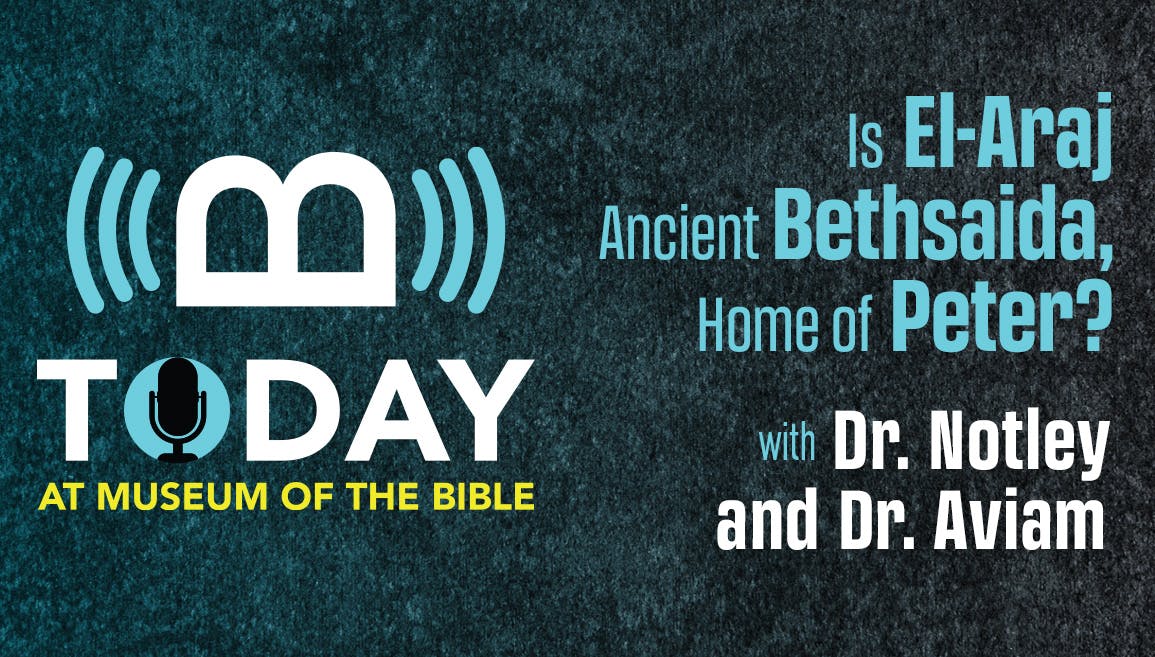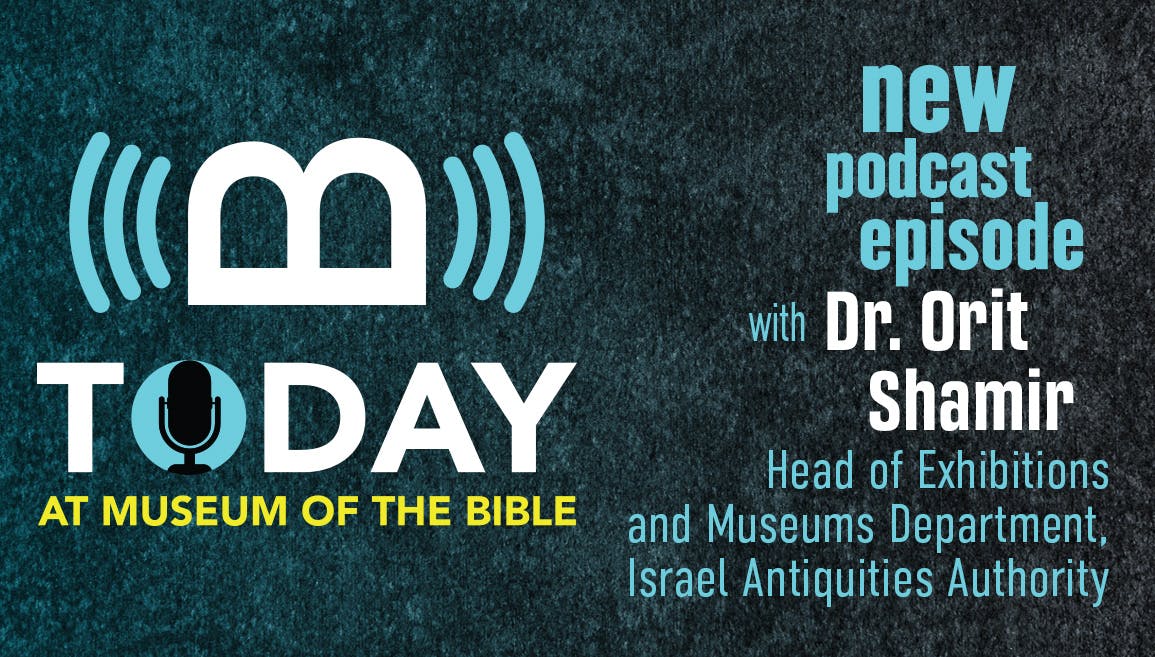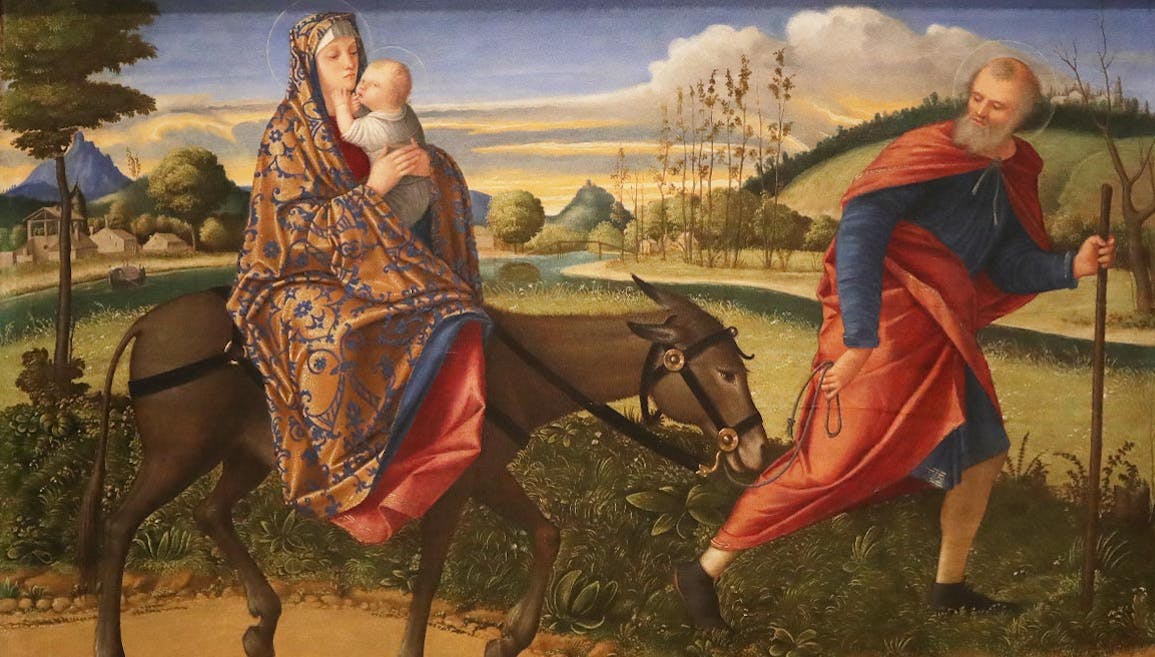Homecoming Week: A Time for Φιλοξενία
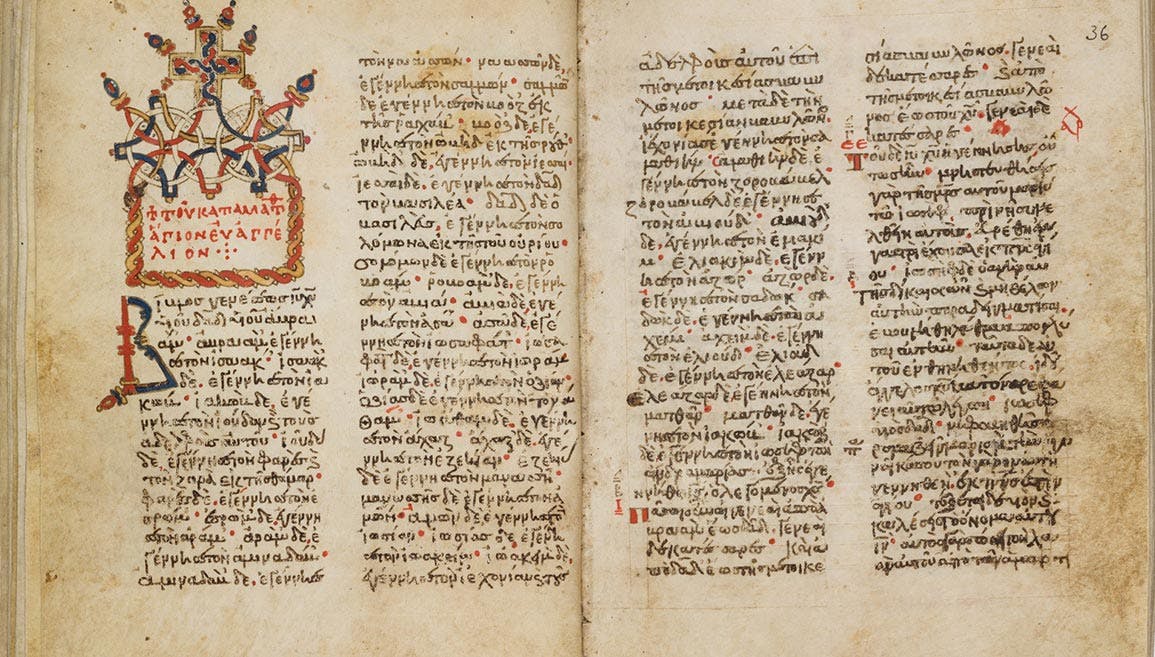
In a previous article for Museum of the Bible Magazine, I described discovering that our manuscript 352 was actually Eikosiphoinissa MS 220 (GA 1429). This led the museum to deaccession the manuscript from our collections and transfer ownership back to the Ecumenical Patriarchate of the Greek Orthodox Church. In gratitude for this unexpected gesture, the Ecumenical Patriarchate allowed Museum of the Bible to display the manuscript as part of a new exhibit on the Orthodox tradition in the History of the Bible gallery on Floor 4. On October 25, 2021, representatives of His All-Holiness Bartholomew blessed the new exhibit and the manuscript remained on display until August 2022.

Figure 1: Eikosiphoinissa MS 220 open to the first chapter of the Gospel according to Matthew.
In that month, the museum delivered the manuscript to His Eminence Archbishop Elpidophoros of America, who arranged to ship it to Greece. After its arrival, a police escort accompanied the manuscript to the Theotokos Eikosiphoinissa Monastery on its mountaintop near Drama in Eastern Macedonia, a part of northern Greece. The sisters at the monastery happily placed the manuscript in the library. After 105 years, the manuscript was home again.
At the end of September 2022, I was part of the official delegation from Museum of the Bible that traveled to Turkey and Greece as guests of the Ecumenical Patriarchate to celebrate the homecoming of Eikosiphoinissa MS 220. The delegation also included Steve Green, co-founder and chairman of the board of Museum of the Bible, Dr. Jeff Kloha, chief curatorial officer, and his wife Susan, and museum advisory board member Dr. Elizabeth Prodromou.
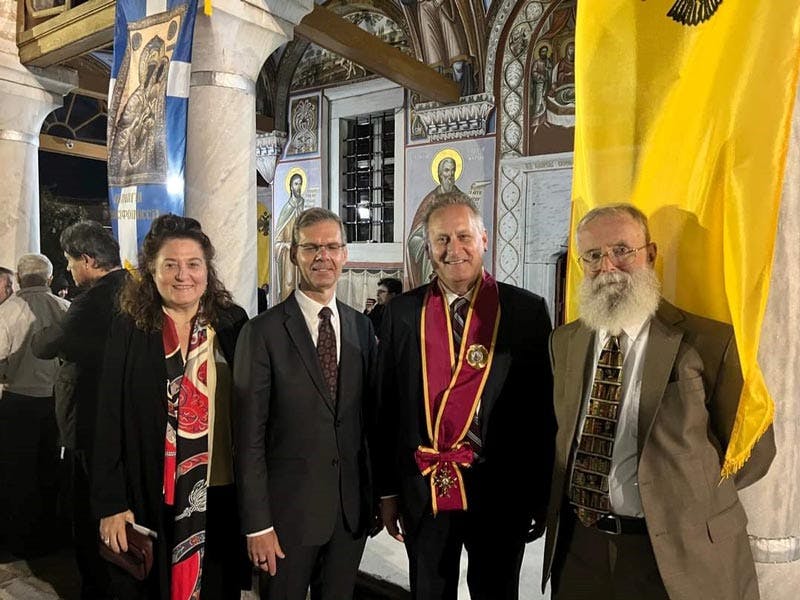
Figure 2: The group from Museum of the Bible. From left: Dr. Elizabeth Prodromou, Dr. Jeff Kloha, Steve Green, and Brian Hyland.
We arrived in Istanbul, staying a short distance from the Hagia Sophia, the historic domed cathedral built between AD 532 and 537 by the Roman emperor Justinian. It was converted to a mosque in 1453, a museum in 1934, and has converted to a mosque again since 2020—the loss of the Hagia Sophia as a place of worship is still considered a deep loss to the church. Over the next few days, our indefatigable guide, Fr. Agathangelos, the grand archimandrite and archivist of the Ecumenical Patriarchate, led us on tours of the Church of the Dormition of the Theotokos in Yeniköy, Hagia Sophia, Sts. Sergius and Bacchus Church (also known as the Little Hagia Sophia Mosque), the Pantokrator Monastery (also known as the Zeyrek Mosque), and the Holy Trinity Patriarchal and Stavropegial Monastery and its Theological School on the island of Halki. The experience was a rich immersion in the beauty of the Byzantine Empire’s art and the genius of its architecture, both of which continue to inspire Greek Orthodox art and architecture. We also saw firsthand the challenges faced by Christians and the church in a Muslim-majority nation.
The highlight of our stay in Istanbul occurred on September 27, when we visited the Phanar, the seat of the Ecumenical Patriarchate. After a tour of St. George’s Church and a chance to see the original icon that inspired the replica on display at Museum of the Bible, we had an official audience with His All-Holiness Ecumenical Patriarch Bartholomew.
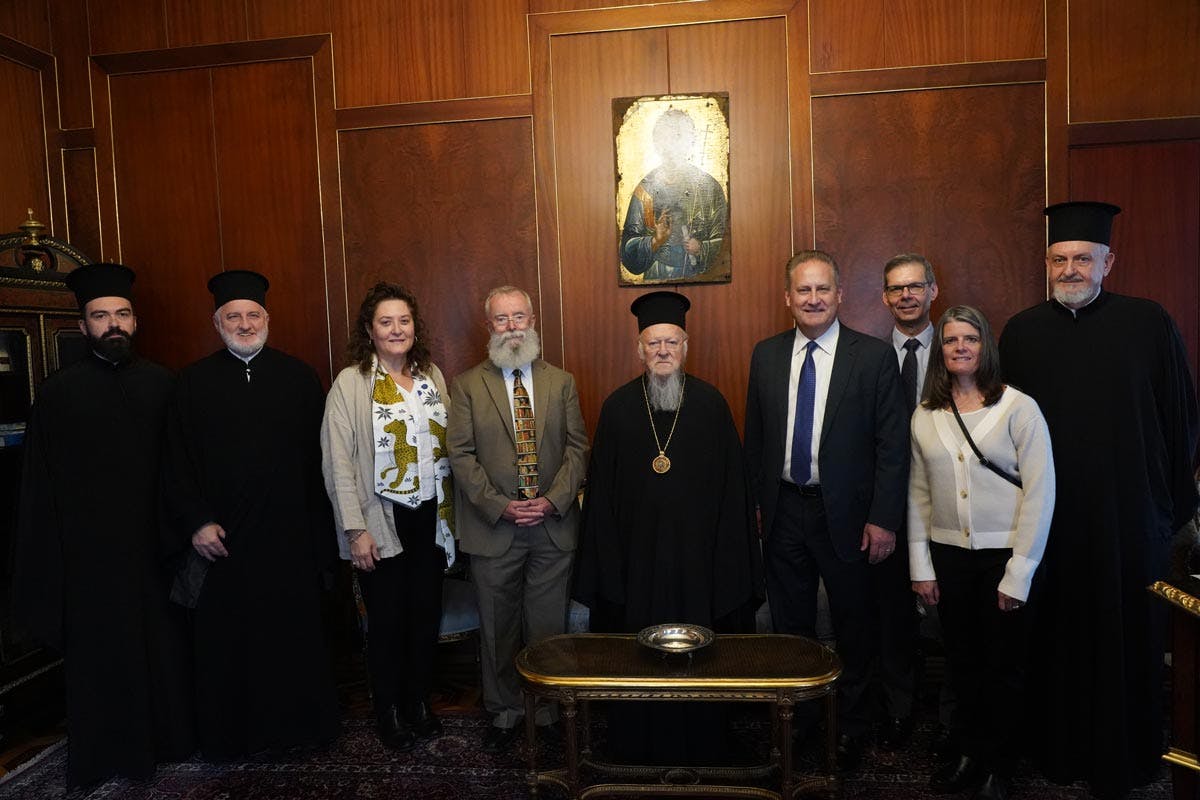
Figure 3: The official audience photo. Left to right: the Very Reverend Grand Archimandrite Agathangelos, archivist of the Ecumenical Patriarchate; His Eminence Archbishop Elpidophoros of America; Dr. Elizabeth Prodromou; Brian Hyland; His All-Holiness Ecumenical Patriarch Bartholomew; Steve Green; Dr. Jeff Kloha; Mrs. Susan Kloha; His Eminence Elder Metropolitan Emmanuel of Chalcedon. Photo credit: Nikos Papachristou/Ecumenical Patriarchate.
He graciously greeted us and thanked us for the return of the manuscript that has done so much to strengthen our mutual friendship and cooperation. The formal reception was followed by a leisurely luncheon held at the Halat Restaurant on the shores of the Golden Horn.
The following evening, we flew with Archbishop Elpidophoros and Fr. Agathangelos to Thessaloniki, where a church delegation awaited us and a motorcade with police escort delivered us to the nearby hotel. Next morning, the motorcade reassembled to bring us to Philippi, Drama, and the Theotokos Eikosiphoinissa Monastery. Our first stop was the museum and the ruins of ancient Philippi, where the apostle Paul once preached and shared a jail cell with Silas. In the ruins of an ancient octagonal church is a fourth-century inscription that mentions the basilica was dedicated to Paul.
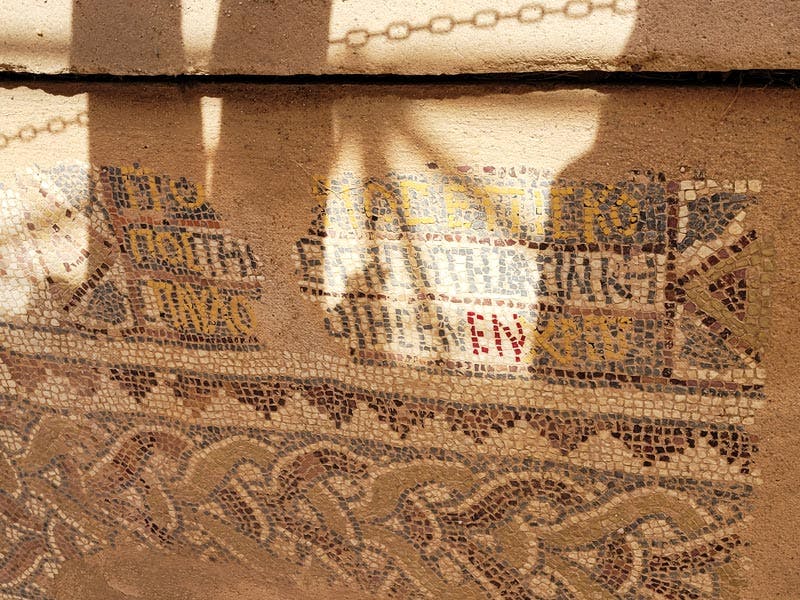
Figure 4: The fourth-century mosaic inscription recording that Bishop Porphyrios built the basilica dedicated to the apostle Paul, whose name is written in yellow on the left side of the third line as ΠΑΥΛΟ[Υ].
From Philippi, the motorcade drove to Château Nico Lazaridi in Drama for a five-course luncheon.
The final stop was at the monastery, perched on the northern slopes of Mount Pangaion, 2,100 feet above the surrounding plain. The long, winding ascent up the mountain’s steep sides made clear the leaders of the komitadji band, who looted the monastery in 1917, had carefully planned the logistics of their attack, bringing 24 pack mules with them to carry their plunder safely. When we arrived at the monastery, we passed through the courtyard and entered the katholikon, the church in the monastery, where a prayer service was taking place. At the end of the service, members of the clergy escorted us to the front of the church. Here Metropolitan Panteleimon of Xanthi addressed the congregation and formally presented to Steve Green the “Grand Cross with Star,” the highest award of the Holy Metropolis of Drama, in gratitude for the return of the manuscript.

Figure 5: Steve Green receives the "Grand Cross with Star" from Metropolitan Panteleimon of Xanthi.
In turn, Steve addressed the congregation, expressing how the return of the manuscript was a “beautiful reminder of God’s faithfulness in preserving his Word and the Gospel from generation to generation,” and how he hoped it would continue to bring light to the community at the monastery. After this presentation, everyone returned to the courtyard for the final signing of the transfer documents.
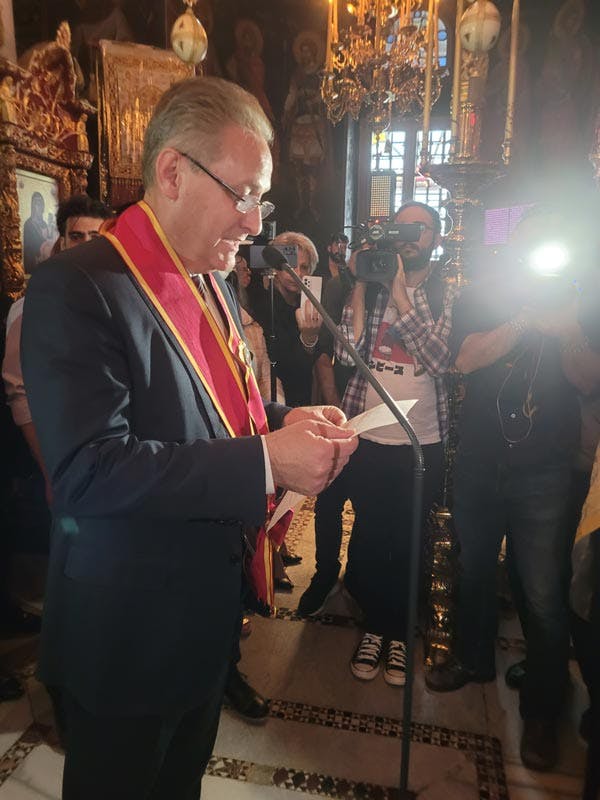
Figure 6: Steve Green addresses the congregation after receiving the "Grand Cross with Star."
When Steve and Abbess Antonini signed the protocol for the delivery and receipt of the manuscript, the bells in the monastery began to peal with the joy everyone felt on this historic occasion.
After a celebratory banquet, the motorcade returned us to Thessaloniki.
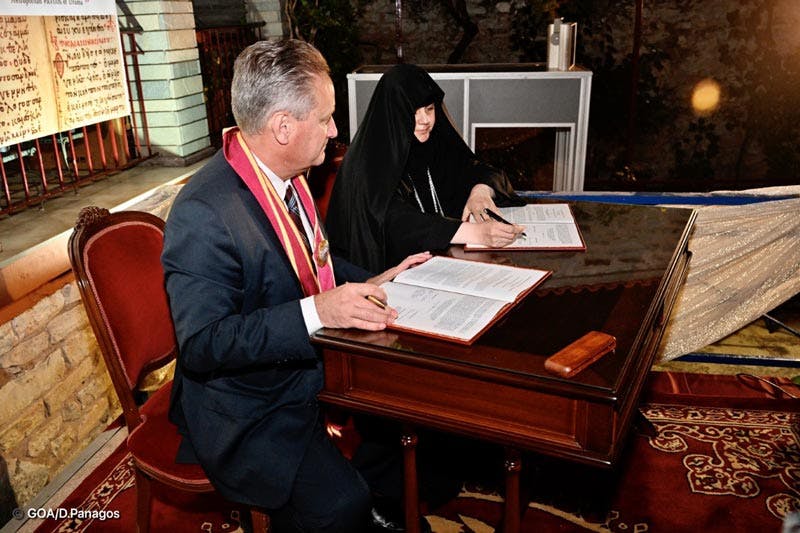
Figure 7: Steve Green and Abbess Antonini sign the protocol for the delivery and receipt of Eikosiphoinissa MS 220. © Photo Credits: GOARCH / Dimitrios S. Panagos.
The following day involved visits to sites in Thessaloniki. At the Vlatadon Patriarchal and Stavropegial Monastery, we viewed the beautiful frescos and icons in the church and heard about the ongoing projects of the Patriarchal Foundation for Patristic Studies. One of which, the critical edition of 1 Thessalonians, is funded by the museum’s Scholars Initiative support of the Greek Paul Project. Throughout the day, we visited two other Byzantine sites, the Church of Saint Demetrios (the patron of Thessaloniki) and the Rotonda Monument, and the award-winning Museum of Byzantine Culture.
A common icon theme we encountered throughout the trip was Ἡ φιλοξενία τοῦ Ἀβράαμ (the hospitality of Abraham, in Genesis 18). Typically, the icon shows the angels seated at a table laden with food while Abraham and Sarah stand on either side, attentive to their guests’ every need.
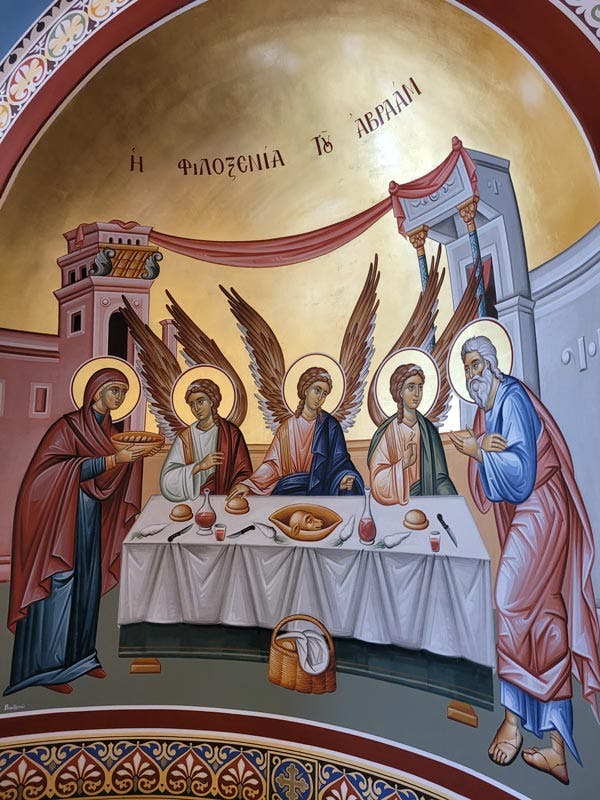
Figure 8: An icon of the hospitality of Abraham from the Halki Monastery.
This image of hospitality captured how all the representatives of the Ecumenical Patriarchate treated us every step of the way. Many thanks to His All-Holiness the Ecumenical Patriarch Bartholomew, Archbishop Elpidophoros, and Fr. Agathangelos for their tireless hospitality modeled on that of Abraham and Sarah.
By Brian Hyland, Curator of Medieval Manuscripts
